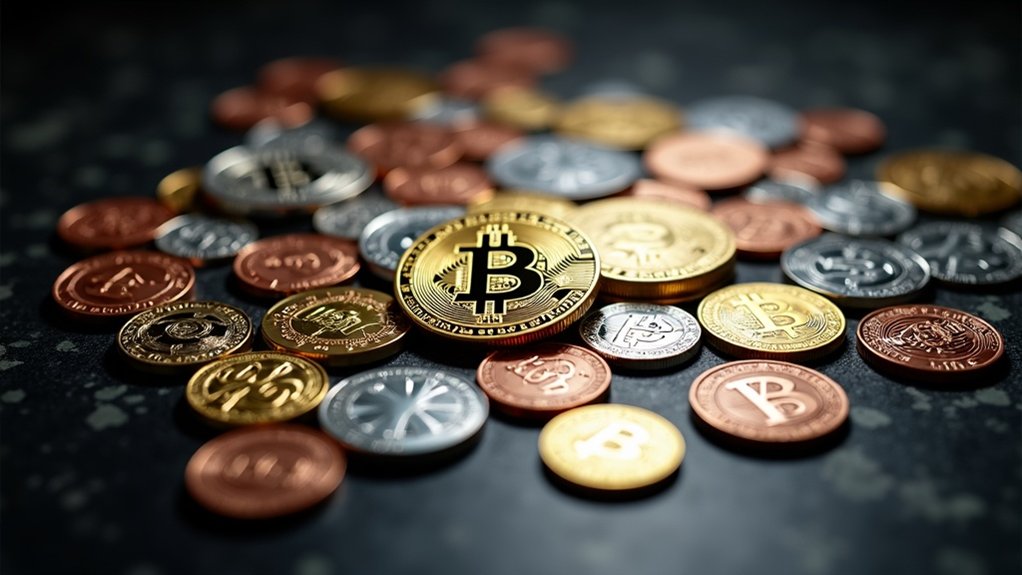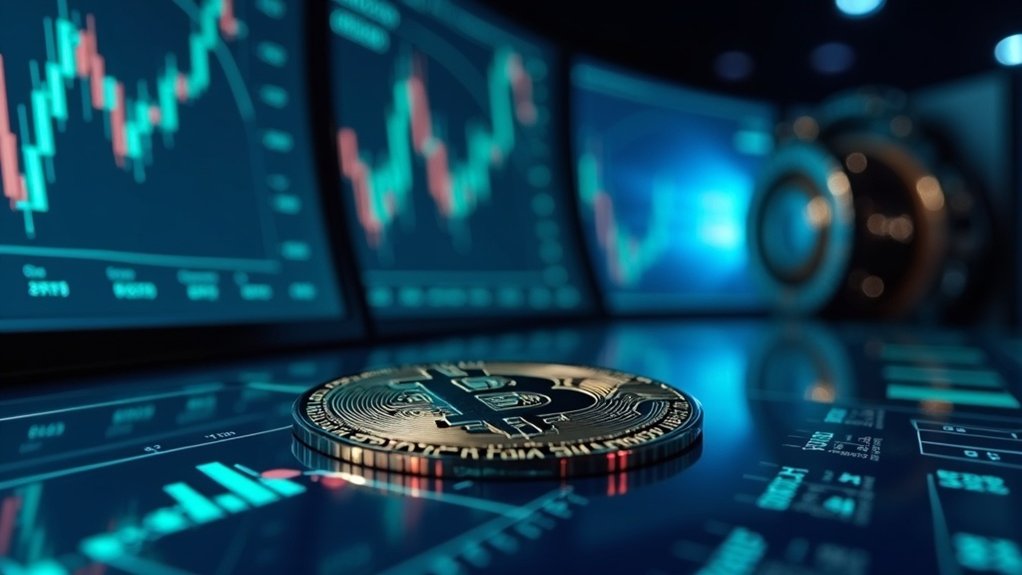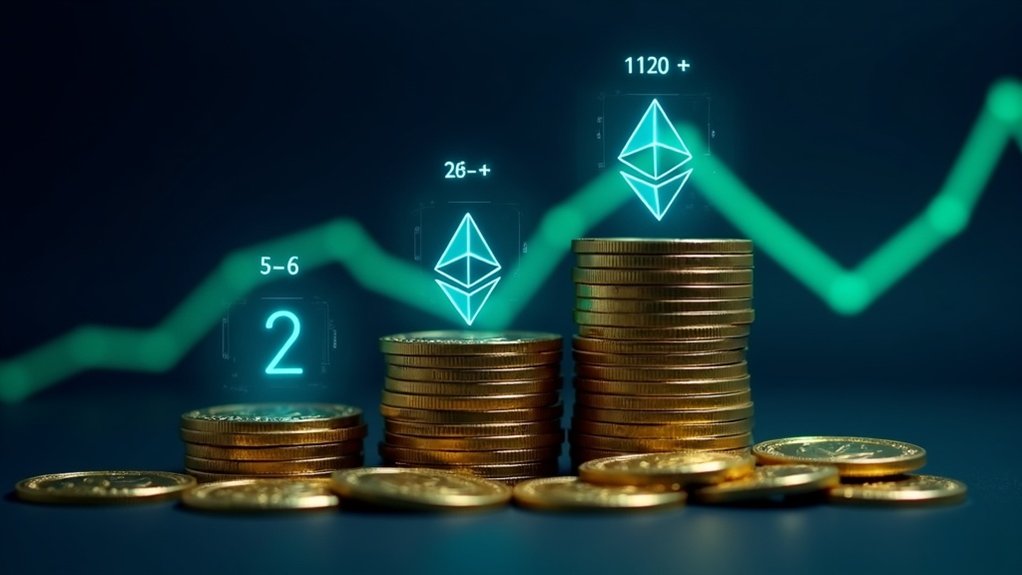Altcoins are simply any cryptocurrency that isn’t Bitcoin. They emerged after Bitcoin’s success, aiming to address its limitations or add new features. Some run on their own blockchains, others as tokens on existing platforms. Ethereum pioneered smart contracts, while others focus on privacy, stability, or faster transactions. These digital assets exhibit wild price volatility—sometimes from a single tweet. Their innovations range from DeFi applications to governance systems. The cryptocurrency universe extends far beyond just Bitcoin.
An altcoin is any cryptocurrency that isn’t Bitcoin. Simple as that.
These digital currencies emerged after Bitcoin’s success, attempting to address perceived weaknesses or introduce new features.
The name itself gives it away – “alternative coins.”
There are thousands of them now, each claiming some unique selling point or revolutionary technology.
Altcoins come in various forms. Some are straightforward coins with their own blockchains, while others exist as tokens built on existing platforms.
Bitcoin forks like Bitcoin Cash basically copied Bitcoin’s homework but made a few changes.
Other altcoins ditched Bitcoin’s energy-hungry Proof-of-Work model altogether, embracing more efficient consensus mechanisms like Proof-of-Stake.
Cardano and EOS are prime examples.
The cryptocurrency ecosystem wouldn’t be nearly as interesting without altcoins.
They’ve introduced smart contracts, allowing for decentralized applications to run on blockchains.
Ethereum pioneered this approach.
Stablecoins maintain consistent values, making them practical for everyday transactions.
Privacy coins offer enhanced anonymity.
And yes, there are even meme coins that exist mostly for laughs and community engagement.
These alternatives have created entirely new financial ecosystems.
Decentralized Finance (DeFi) platforms let people lend, borrow, and trade without traditional banks.
Most beginners start by purchasing major cryptocurrencies before trading them for their desired altcoins.
Governance tokens give users actual voting rights in project decisions.
Some definitions have evolved to exclude both Bitcoin and Ethereum as altcoins due to their market dominance and foundational status.
Pretty revolutionary stuff.
Investing in altcoins? Buckle up.
They’re wildly volatile – even by crypto standards.
Prices swing dramatically based on market sentiment, technological developments, and regulatory news.
One tweet from the right influencer can send values soaring or crashing.
Technologically speaking, altcoins push boundaries.
They’ve advanced blockchain interoperability, privacy technologies, and tokenization of real-world assets.
Some focus on lightning-fast transactions, others on absolute security.
Many altcoins have implemented zero-knowledge proofs to enhance user privacy beyond what Bitcoin offers.
The impact of altcoins extends beyond technology.
They’re diversifying finance, creating new economic opportunities, and challenging traditional systems.
Love them or hate them, altcoins have permanently altered the cryptocurrency landscape.
Bitcoin may have started the revolution, but altcoins are expanding its possibilities.
Frequently Asked Questions
How Do I Evaluate an Altcoin’s Potential for Growth?
Evaluating altcoin growth potential requires examining multiple factors.
Distribution structure matters—too concentrated? Red flag.
Legal compliance reduces risk.
Active networks with genuine transactions trump hyped projects.
Developer activity on GitHub shows commitment.
Strong communities power long-term stability.
Real-world applications actually matter.
Technical fundamentals—code quality, security, scalability—separate survivors from casualties.
Market dynamics help too: Bitcoin dominance falling? Altcoin season might be coming.
No guarantees though. Crypto’s wild.
Which Exchanges Offer the Widest Variety of Altcoins?
Kraken leads the pack with over 350 cryptocurrencies. Not far behind, Crypto.com offers 313 different digital assets. Coinbase, surprisingly robust for a mainstream exchange, lists 235 cryptocurrencies. Binance US? Restricted by regulations but still manages 158 listings. Gemini trails with just 73 options.
Worth noting – international versions of these exchanges often feature even more altcoins.
Availability varies by region though. Regulatory headaches, you know.
Each platform has its own vetting process.
Are Altcoins More Volatile Than Bitcoin?
Yes, altcoins are typically more volatile than Bitcoin. Plain and simple.
Their smaller market caps make them easier to manipulate with large trades.
Less liquidity, more price swings.
While Bitcoin fluctuates plenty, it’s the steady grandpa of crypto compared to the wild rollercoaster of altcoins.
The numbers don’t lie – altcoins regularly experience double or triple the price movement of Bitcoin.
Higher potential returns? Sure. But the crashes? Absolutely brutal.
How Do Tokenomics Affect an Altcoin’s Long-Term Value?
Tokenomics make or break altcoins. Period.
Supply mechanics directly impact scarcity—fewer tokens often means higher value.
Distribution matters too; whales holding 90% of supply? Red flag.
Utility drives actual demand beyond hype cycles.
Projects with solid use cases survive bear markets.
Security breaches? Death sentence.
The most brilliant tokenomics still fail without community adoption.
Truth is, most altcoins with poor tokenomics design eventually fade into crypto oblivion. No surprise there.
What Security Risks Are Specific to Lesser-Known Altcoins?
Lesser-known altcoins face unique security threats that big cryptocurrencies don’t. Low decentralization makes them sitting ducks for 51% attacks.
Hackers can rent hashpower—cheaper than buying it!—to overwhelm these networks.
Their code? Often unaudited and riddled with bugs. Nobody’s watching, so exploitation happens fast.
Limited user bases mean less security scrutiny, while sketchy exchanges handling these tokens create additional risk layers.
Small communities can’t defend against sophisticated attackers. Pretty grim odds, honestly.









